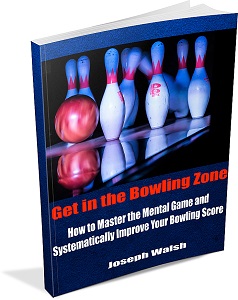If you go to a bowling alley and observe the bowlers on three adjacent lanes, it’s probable that you’ll see all three of them throwing the ball differently.
Some of us throw a relatively straight ball, others use a modest hook into the pocket while still others unleash a wildly spinning ball that hooks a great way across the lane.
Beyond the straight ball, which is the most straightforward (the ball travels straight down the lane) there are three most commonly used bowling delivery styles to know about, and the bowlers who use them are called “strokers,” “crankers” and “tweeners.”
Strokers
This is the most classic and smooth stroke, still used by a majority of professional bowlers. Strokers have a lower revolution rate on their bowling balls (usually near 300 rpm), and hook less than the other dominant form, crankers. The backswing rarely goes higher than parallel to the ground. This is also considered the most consistent delivery style and it relies greatly on accuracy and ball placement.
Crankers
Compared to the more “slow and steady wins the race” strategy of strokers, crankers rely heavily on speed and power. The backswing is typically much higher than strokers (but not always), and the revolution rate is much higher. If you see a fast ball speed, and a larger and more abrupt hook, you’re probably looking at a cranker. Most people agree that crankers have the shot that is most fun to watch. They also carry the most pins and have a shot that can explode through the rack and pick up strikes even on a not-perfect shot. The risk of a split, however, is often increased with this style.
Tweeners
Strokers and crankers are the terms that get the most attention. But they are far from the only delivery styles available in the bowling world. Tweeners, for example, are somewhere in between the two styles, not quite reaching the speed and power (or wrist position) of a cranker but not quite as smooth or low of a backswing of a stroker. This is just one possible example; usually any combination of traits of strokers and tweeners will earn a bowler the label of tweener. You could call this a hybrid form.
What does this mean for your game?
Because of the differences between these bowling delivery styles, you want to understand and embrace your own form, not try to emulate the bowler next to you or the pro on TV. Crankers usually have the most impressive looking shot, but you shouldn’t blindly follow their lead if it isn’t your most effective style. Focus on selecting the form that works best for you and getting as good as you can at it. It’s also worth saying that in today’s game, so many bowlers take bits and pieces from here and there that we shouldn’t always try to pigeon-hole everyone into finite categories.
Are there other bowling delivery styles?
Beyond the three already mentioned, there are indeed other bowling styles and variations that you will likely encounter at some point.
No-thumb – Many bowlers throw the ball with two fingertips and no thumb, as this is usually the easiest way to start throwing a hook. We’ve covered this style here before, and several Beginner Bowling Tips readers have shared great comments. What do you think about the two-fingertip, no-thumb style?
Two-handed – Another style that’s rapidly increasing in popularity is two-handed bowling. This style usually leaves the thumb out as well, allowing your bowling hand to generate a high rev rate and your opposite hand to help provide stability. The result is a high ball speed and extremely high rev rate. Also, bowlers usually remove the opposite hand before releasing, making it technically a style of two-handed approach, not delivery. One of the most popular two-handed bowlers is Australian professional Jason Belmonte.
Power Stroker – A more detailed subcategory of the tweener, a power stroker is a common term to refer often has stroker tendencies (for example, timing) except for a high rev rate or fast ball speed. It could also refer to a cranker who possesses the smoothness of a stroker.
We hope this article was helpful. What type of form do you use when bowling, and do you think it’s the most effective for you?


Leave a Reply